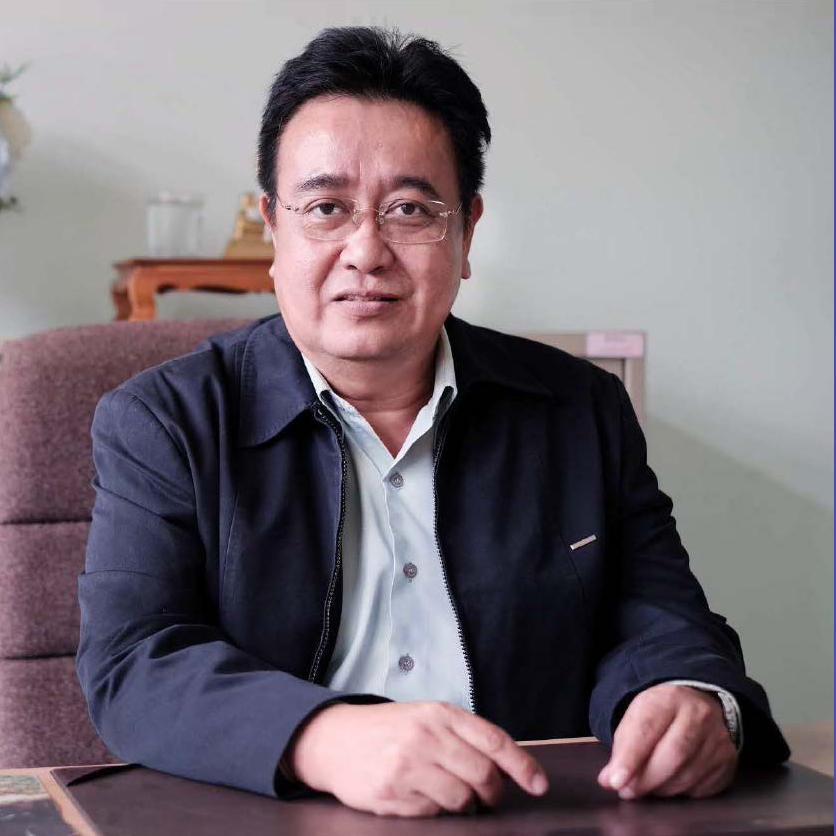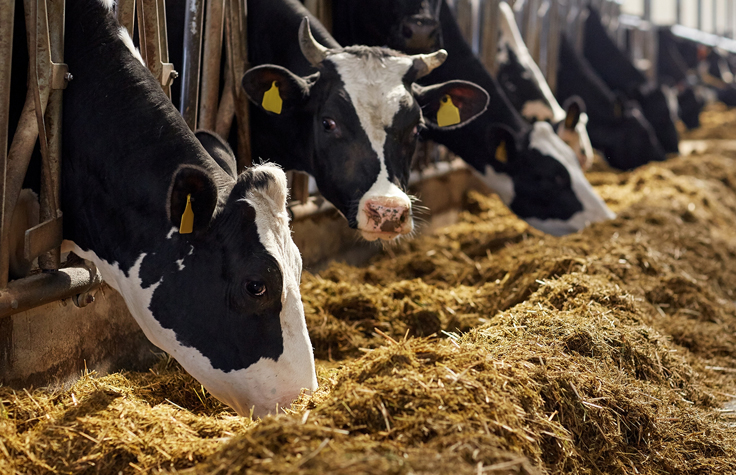Genomic Selection - The future of livestock breeding
Introduction
Dr. Sayan Buaban is the Head of Research and Animal Genetic Evaluation Section at Department of Livestock Development (DLD), Thailand. He has spent more than 30 years working on DLD’s dairy cattle improvement program. From the conventional breeding methods to the current genomic selection approach, Dr. Sayan and his team has been playing vital role in improving the breeding efficiency and productivity of dairy cattle in Thailand. This great work has resulted in him winning the “Best Research by a Thailand Inventor” award in 2020.
We had the privilege to speak with Dr. Sayan, to discuss about his bovine genotyping work, the impact towards farmers in Thailand, as well as the advantages of a genomic selection approach using the Illumina’s iScan system and the Illumina BovineSNP50 v3 BeadChip Microarray.

Dr. Sayan Buaban is the Head of Research and Animal Genetic Evaluation at the Department of Livestock Development (DLD), Thailand.
Q: What does the Department of Livestock Development (DLD) Thailand do?
A: Well, DLD has been established for 78 years. Our main mission is to ensure food security in the country through producing sufficient animal-based food such as meat, milk, and their products to serve domestic consumption. Currently the DLD also focuses on supporting farmers and livestock operators to improve productivity and quality of livestock and products following the good agricultural practice, food safety, and disease control and prevention policies in order to comply with the international standards and regulations.
Q: Can you share about Thailand’s Bovine livestock landscape?
A: In Thailand, cattle are one of the most important livestock that have been closely related to the traditional Thai way of life from the past, because agricultural activities like crops and livestock breeding including cattle were major sources of food and an additional income. Nowadays, beef and dairy cattle production are two main livestock sectors that serve domestic consumption. Both beef and dairy cattle are raised in all regions of the country, where a majority of farmers are small-sized holders. The government as represented by DLD, plays an important role in giving technical input, and legal support in conjunction with development pushed by private sectors. For the private sectors, usually they own large farming operations that have adopted more advanced technology.
Q: Can you explain what is the role you play in Thailand’s Bovine livestock breeding landscape?
A: Well, I would say I’ve been working for the DLD’s dairy cattle improvement program for more than 30 years. I started by working in a team to establish infrastructure required for setting up the genetic evaluation program. We developed the breeding program using a conventional method until 4 years ago, then we started to implement genomic selection method in order to increase efficiency of selecting the best animals to breed the next generations. Under DLD, we are responsible for setting up the optimal breeding goal and plan for dairy cattle, running a genetic evaluation program, producing germplasms from the best animals (e.g., frozen semen from elite bulls, elite dams). disseminating good germplasms to farmers and evaluating the genetic improvement programs.
This is just one type of livestock that we are working with. In fact, we also work with beef cattle and other livestock species such as goat, buffaloes, etc.
Q: Can you give more details on the Bovine research that you are currently conducting? Why and when did you adopt genomic selection?
A: Historically, we have used a conventional method for selecting animals with high genetic merit and used the parent for the next generations. This selection approach will result in progress in animal genetic like increasing milk yield over generations. However, there are some limitations. For example, we may not accurately select the right animals with truly high genetic potential! That’s why genomic selection comes into play.
"Genomic selection will overcome such limitation of the traditional method by improving the accuracy of selection merit as well as shortening generation interval"
As a result, genetic improvement such as level of milk production per cow can be increased in a shorter period. In Thailand, the dairy cattle genetic improvement program has adopted genomic selection since 2015. Just want to let you know that the first implementation of genomic selection in dairy cattle started in 2009 in USA, one of leading countries of the dairy industry.
What is your goal or objective of conducting genomic selection?
A: Actually like I just said, genomic selection, in short, it helps us to improve accuracy of selecting the best animal using information for animals’ DNA. With this technology, we can also shorten time used for selecting an elite animal because young animals like young bulls can be selected using DNA information before they can have performance records from their daughter like milk production level. So, apart from increasing accuracy of selection, we can also reduce the cost of raising bulls in test station because we can select the high genetic merit animal at a younger age with a reasonable accuracy. Ultimately, genomic selection will lead to a faster rate of genetic improvement which we call “genetic progress or genetic gain” compared to the traditional genetic evaluation method.
Q: Can you share the differences between the previous technology vs genomic selection?
A: Actually, initially we had used the traditional genetic evaluation called BLUP (Best Linear Unbiased Prediction) that incorporates performance records or phenotypes from animals and pedigree information into the statistical model that estimates the genetic merit called estimated breeding value (EBV) for each animal. Then we can rank animals using such EBV, and select animals with high breeding value and use them to breed to generate the next generations of animals. With genomic selection, everything keptthe same except genotypes from animals are also used. With this method, its primary benefit is to improve accuracy in selecting the best animal. In other words, we can be more confident in selecting the right animals with actual high genetic potential for a trait of interest like milk yield.
Q: What is the benefit and impact on farmers in Thailand?
A: Well, dairy farmers actually want to have dairy cows with good genetics for high milk yield as well as “easy to raise characteristic”.
This means the ability to adapt to tropical environments like here in Thailand, which is hot and humid as well as being disease resistant as parasites are prevalent. Our dairy breeding program implemented using genomic selection technology can fulfill the goal of farmer in a shorter time compared to the traditional method as I said earlier. You know, DLD also produces more than 250,000 doses of frozen semen a year from elite bulls and these are provided to local farmers.
Why did I mention about sustainability? It means that we will be less dependent on importation of frozen semen. In addition, we have our own Thai dairy breed (Tropical Holstein), which is suitable for the hot and humid regions like Thailand.
"This will help farmers not only in terms of cost reduction, but also sustainability in dairy production."
Q: The Thailand government granted you an award for your Bovine genotyplng project, can you share more?
A: Well, first I would say it is not only me, it is for everybody who patiently took part in the project including government officers, practitioners, and farmers. The award was for “the best research by a Thailand inventor” given by the national research council of Thailand in 2020.
Q: What does this success mean to you?
A: First, I feel really proud of myself for the success since I’ve been working on it for a long time. This invention can make the dairy industry in Thailand sustainable. As I said it is not only me, but its for everybody. However, this is just the beginning of the journey!
Q: What are your future plans?
A: Well, you know a genetic improvement program in dairy cattle is a long-term project, say more than 20 to 30 years. For my future plan I would like to use genomic technology as a routine work in dairy cattle selection. This technology will be used in other types of livestock in the near future too.
Q: In your opinion how can the use of genomic selection be extended for commercial use (meat/milk producers)?
A: Of course yes! Producers can benefit from genomic selection programs run by DLD as we provide the best genetic semen to farmers in order to produce a good dairy cow. Moreover, the surplus from domestic use we will export to neighboring countries. Nowadays, we have only implemented the genomic selection in dairy cattle; however, in the near future we plan to implement to beef cattle or other livestock species.
"Yes, I think sooner or later in the near future, genomic selection will become a routine practice for genetic evaluation programs in most livestock."
Q: Do you think one day genomic selection wlll become mandatory for livestock breeding In Thailand?
A: In Thailand, the private sector will use this technology to improve genetics of their breeds or lines of animals.
Learn more about the products and systems mentioned in this article:
Illumina iScan
www.illumina.com/iScan
Illumina BovineSNP50 v3 BeadChip Microarray
www.illumina.com/products/by-type/microarray-kits/bovine-snp50.html
